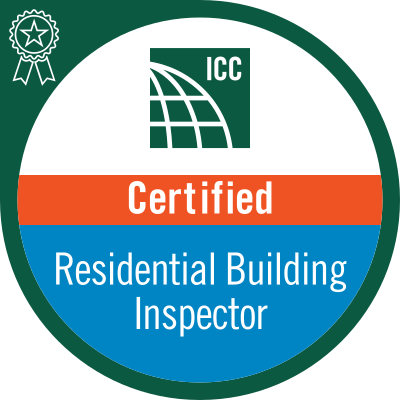If you are looking to jump into the real estate market as a way to grow your wealth and reach new heights of success with a vacation rental, then you can accomplish your goals with a little help. It is all about knowing the rules of the games and making the changes that can help you to stand out from the rest. Here at Red Horse Home Inspection, we love to see fellow professionals succeed, so we have some tips for how you can find the perfect vacation rental and maximize your earnings potential.
Tackle Business Basics
Gaining a deep understanding of business fundamentals is critical for success as a real estate investor. One effective way to enhance your knowledge and skills in this area is by going back to school to earn a business degree. Pursuing a business degree online is a strategic move that can prepare you for wealth building through real estate investment. It covers essential topics such as finance, marketing, and strategic planning, which are pivotal in making informed investment decisions and developing robust business strategies.
Moreover, earning your degree online offers huge time savings, as it allows you to learn at your own pace and accommodate your studies within the rest of your busy schedule. This flexibility ensures that you can continue to focus on your current real estate activities while simultaneously equipping yourself with the knowledge needed for long-term success.
Digital Marketing
In today’s digital age, having a strong online presence is crucial for attracting potential clients and investors. Learning about Search Engine Optimization (SEO) and keywording can significantly enhance the visibility of your online content, whether it’s property listings, investment insights, or market analysis. Fortunately, there are numerous free online resources available that can help you grasp the fundamentals of these techniques.
These resources offer valuable insights into how to optimize your website and social media content, ensuring that your real estate investment business ranks higher in search engine results, thereby reaching a wider audience.
Print Marketing
Effective marketing of your rental properties is key, and flyer design can play a crucial role in this. Utilizing a free online design tool can be a game-changer in creating eye-catching and informative flyers. These tools offer a plethora of customization options, including a wide array of design elements, fonts, and templates, allowing you to craft a flyer that not only stands out but also resonates with your target audience.
The intuitive interface of these design tools makes it easy for anyone, regardless of graphic design experience, to produce professional-looking flyers. Once created, you can either post these flyers on social media platforms to reach a broad audience digitally or download and print them for local distribution.
Consider the Costs That Are Involved
While you may be excited about the money you will be making down the road, you must also understand that you will need to spend your own cash to get your project off of the ground. You may need to pay for building costs, legal fees, permit costs, pay maintenance bills, and more. You will also likely be required to put a down payment on a potential home. When it comes to buying vacation homes, NJ Lenders Corp. notes that you’ll likely need to pay a 20% down payment or more.
If you do not have that money on hand, then all is not lost. You can take out a loan from the bank, try crowdfunding, take out a second mortgage on your existing home, or obtain a home equity loan. If you choose the last option, then you can get a lot of money upfront, and you can use that to make your rental the best it can be.
Assess the Rental Market
A critical step is to assess the competition in the local rental market. Understanding what you’re up against is key to positioning your property effectively. Utilize an online search tool to browse local apartments and rental homes. This will give you a comprehensive view of the pricing, amenities, and unique selling points offered by competitors in your area. By analyzing these factors, you can gauge the standard of living and price range that potential renters expect. This insight is invaluable in setting a competitive rental price for your property and determining which amenities and upgrades could increase its appeal and value.
Renovate the Kitchen
Renovating the kitchen in your investment properties can substantially increase their value and appeal. Key updates such as upgrading appliances to more energy-efficient models, replacing outdated flooring with durable and stylish options, and refinishing the cabinets to refresh their look can make a significant impact.
Upgrade Your Rental Property
If you really want to bring in the cream of the crop, then consider spending some extra money to add in some great amenities that will excite potential customers. A big one is a pool or a hot tub. If you can swing either then you could potentially double the interest in your property. There are also many cosmetic changes that you can consider, including adding new countertops, improving bathroom faucets, replacing the floor, and adding tile.
These days, many customers are also excited about the idea of being eco-friendly, so consider adding energy-efficient LEDs throughout the home, energy efficient appliances, and low flow shower heads that do the job just as well but without the wasted energy. You might also consider smart home options that improve efficiency, such as a smart thermostat and smart lighting options.
As you can see, there are many tips and tricks that you can use to make your first vacation rental a hit. Consider earning a business degree, digitizing your documents, finding the right home, going back to school to sharpen your business know-how, and other strategies to help you succeed.


 Do you feel like the mortgage industry has a language all its own? You’re not alone. Surveys show that many consumers get frustrated with all of the unfamiliar terms, acronyms and phrases that are part of the mortgage application process. Here are some of the most common (and confusing!) mortgage-related terms, explained:
Do you feel like the mortgage industry has a language all its own? You’re not alone. Surveys show that many consumers get frustrated with all of the unfamiliar terms, acronyms and phrases that are part of the mortgage application process. Here are some of the most common (and confusing!) mortgage-related terms, explained: New car smell is divine, but the smell of a newly-built home might be even better. Pristine carpets, freshly painted walls, the scent of freshly-cut lumber lingering in the air — it’s hard to beat the excitement of taking ownership of a brand new property.
New car smell is divine, but the smell of a newly-built home might be even better. Pristine carpets, freshly painted walls, the scent of freshly-cut lumber lingering in the air — it’s hard to beat the excitement of taking ownership of a brand new property. Do you have a move in your future? Whether you’re handing the moving process yourself or hiring a mover, here are some important steps to ensure your move is a successful one:
Do you have a move in your future? Whether you’re handing the moving process yourself or hiring a mover, here are some important steps to ensure your move is a successful one: In the market for a new home? Purchasing a home is definitely something we don’t do every day. So it’s easy to make mistakes, and when it comes to home buying, mistakes can be costly. Here are some of the most common errors made by first-time buyers:
In the market for a new home? Purchasing a home is definitely something we don’t do every day. So it’s easy to make mistakes, and when it comes to home buying, mistakes can be costly. Here are some of the most common errors made by first-time buyers: In spring, we say “Spring has sprung,” but what’s the equivalent for fall, “Autumn has arrived?” Ok, we’ll work on that one a bit. But in the meantime, the arrival of fall means it’s time for some home maintenance! Luckily there’s a lot you can do yourself — inexpensively —to reduce the chance of a costly wintertime home repair disaster, make your home safer and save a bit of money. Here are some things you’ll definitely want to do before winter weather hits:
In spring, we say “Spring has sprung,” but what’s the equivalent for fall, “Autumn has arrived?” Ok, we’ll work on that one a bit. But in the meantime, the arrival of fall means it’s time for some home maintenance! Luckily there’s a lot you can do yourself — inexpensively —to reduce the chance of a costly wintertime home repair disaster, make your home safer and save a bit of money. Here are some things you’ll definitely want to do before winter weather hits: Your down payment is in the bank and you’re pre-approved for a mortgage. You’re all ready to start looking at homes. Here are some tips for home buying the smart way:
Your down payment is in the bank and you’re pre-approved for a mortgage. You’re all ready to start looking at homes. Here are some tips for home buying the smart way:

